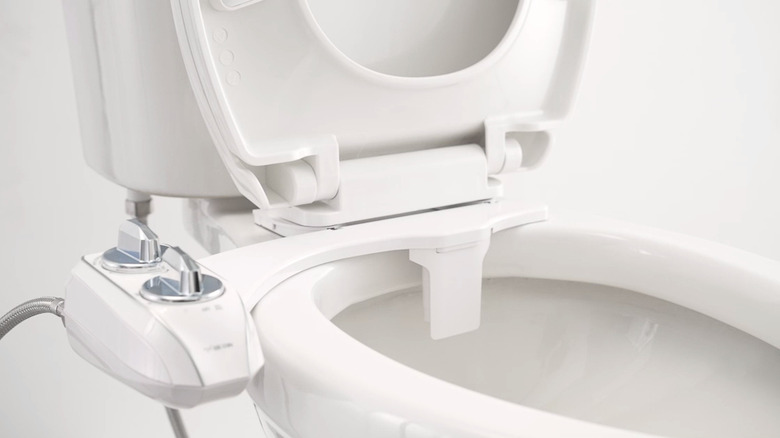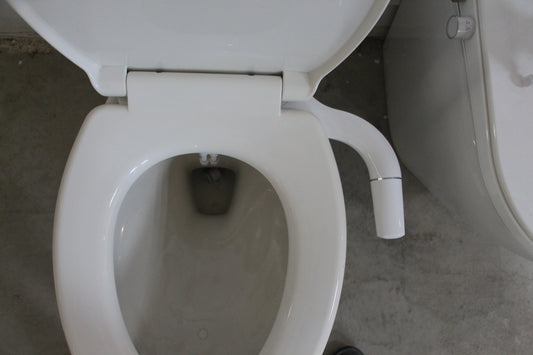In the realm of personal hygiene, few topics are as shrouded in mystery and misunderstanding as bidets. Bidet misconceptions abound, leading many to shy away from incorporating these devices into their daily routines. Despite their increasing popularity, there remain numerous myths and misunderstandings about their use and benefits. This article aims to dispel these myths and encourage a more informed perspective on the subject.
Bidets are often misconceived as a luxury item reserved for the affluent or as an unnecessary addition to the bathroom. However, these perceptions couldn't be further from the truth. The reality is that bidets offer a plethora of benefits, not only in terms of personal hygiene but also in contributing to a more sustainable lifestyle. By addressing these misconceptions, we hope to shed light on the true advantages of bidet usage.

Common Misconceptions About Bidets
Bidets Are Unhygienic
One of the most pervasive bidet misconceptions is that they are unhygienic. This couldn't be further from the truth. In fact, bidets offer a superior level of cleanliness compared to traditional toilet paper. By using water to cleanse, bidets provide a more thorough cleaning experience, reducing the risk of irritation and infection. To learn more about the benefits of using a bidet, you can read this comprehensive guide on bidet usage.
Bidets Are Expensive
Another common misconception is that bidets are costly and an unnecessary luxury. While some high-end models may come with a hefty price tag, there are plenty of affordable options available on the market today. From simple attachments to more advanced models, there's a bidet to fit every budget. Additionally, the long-term savings on toilet paper and the environmental benefits make bidets a cost-effective choice in the long run. For a comparison of different bidet types and their costs, you can explore this insightful article on bidet types.
The Environmental Impact of Bidets
In today's eco-conscious world, the environmental benefits of bidets are becoming increasingly recognized. Traditional toilet paper production is resource-intensive, requiring significant amounts of water and trees. By switching to bidets, individuals can significantly reduce their environmental footprint. A bidet uses a fraction of the water required to produce toilet paper, making it a more sustainable option. Moreover, the reduction in toilet paper usage helps conserve trees and reduce waste in landfills.
Bidets for Water Conservation
Water conservation is a critical global issue, and bidets can play a role in addressing it. By reducing the reliance on toilet paper, bidets contribute to saving water used in the paper production process. To learn more about how to promote water-saving habits in your daily life, check out this article on water conservation.
Adapting to Bidet Use
For those new to bidets, the transition may seem daunting. However, adapting to bidet use is easier than it seems. Most modern bidets are user-friendly, with intuitive controls and adjustable settings for water pressure and temperature. Additionally, many people report that once they make the switch, they can't imagine returning to traditional toilet paper.
Overcoming Cultural Barriers
Cultural perceptions play a significant role in the adoption of bidets. In regions where bidets are not commonly used, there might be hesitance or skepticism towards them. However, as more people become aware of their benefits, these cultural barriers are gradually breaking down. For those interested in understanding how to use a bidet properly, this guide on bidet usage offers practical tips and insights.
Conclusion
In conclusion, bidet misconceptions often stem from a lack of information and cultural biases. By addressing these myths and highlighting the numerous benefits bidets offer, we can encourage more people to embrace this eco-friendly and hygienic bathroom fixture. Not only do bidets provide a superior cleaning experience, but they also contribute to environmental conservation and cost savings. As we move towards a more sustainable future, it's time to rethink our bathroom habits and consider the advantages of bidet usage.

FAQs
Are bidets suitable for all types of bathrooms?
Yes, bidets come in various designs and sizes, making them suitable for different bathroom layouts. From standalone units to attachments, there's an option for every space.
Can bidets help with skin irritation?
Yes, bidets can help reduce skin irritation by providing a gentle and thorough cleanse, eliminating the need for abrasive toilet paper.
Do bidets require special plumbing?
While some bidet models may require additional plumbing, many modern options are designed for easy installation and can be attached to existing toilet setups without the need for extensive modifications.
This article contains affiliate links. We may earn a commission at no extra cost to you.






